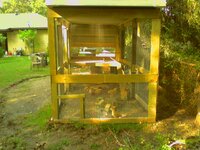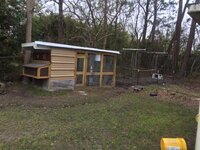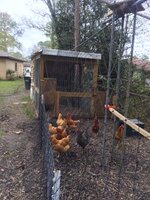PippinChicken
Songster
- Oct 28, 2017
- 168
- 113
- 131
I'm planning some new breeding pens and would love to hear from people who have done an open run/coop combo sort of approach like these examples from online. I can see definite benefits to it, but the idea of not having them locked up in a solid box at night concerns me.
Have you had pens like this? What did you like and dislike? How did you make it as predator proof as possible without a full secure coop portion? What advice would you give to someone considering this style?


Have you had pens like this? What did you like and dislike? How did you make it as predator proof as possible without a full secure coop portion? What advice would you give to someone considering this style?








